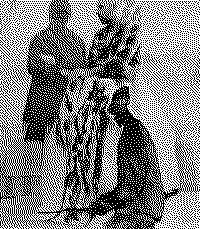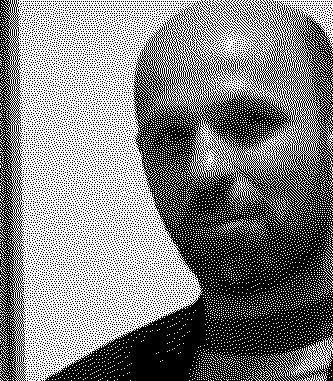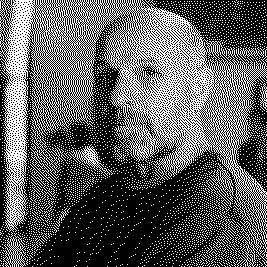Artists/Peter Doig
Fast Facts
Dreamlike Landscapes
Doig is celebrated for his lush, dreamlike landscapes that often feature elements of the uncanny. These paintings are not direct representations but are filtered through memory and imagination, creating a sense of ambiguity and mystery.
Influence of Film and Photography
His work frequently draws upon imagery from film and photography, which he transforms through a process of layering and texturing. This approach results in scenes that feel both familiar and otherworldly, inviting viewers into a dream-like narrative space.
Vivid Use of Color
Doig's paintings are notable for their vibrant color palettes and intricate light effects, which add depth and emotion to his scenes. His use of color can range from the subtle and naturalistic to the boldly expressive and fantastical.
Recurring Motifs
Certain motifs recur throughout Doig's work, such as canoes, cabins, and figures in landscapes, which serve as anchors or characters in his enigmatic visual stories. These elements often have a personal or symbolic significance, contributing to the narrative depth of his paintings.
Mixed Media and Techniques
Doig employs a variety of media and techniques in his work, including oil paint, pastel, and charcoal, on canvas as well as on paper. His technique is characterized by a combination of detailed brushwork and areas of wash or impasto, creating richly textured surfaces.
Cultural and Geographic Influences
Though born in Scotland and associated with the British art scene, Doig has lived and worked in various locations, including Trinidad and Canada. The diverse landscapes and cultures of these places have deeply influenced his subject matter and artistic sensibility.
Critical and Commercial Success
Doig has achieved both critical acclaim and commercial success, with his works being sought after by collectors and achieving high prices at auction. He is considered one of the leading contemporary painters of his generation.
Exhibition and Recognition
His work has been the subject of numerous solo exhibitions around the world, and he has received several prestigious awards for his contributions to contemporary art.
Biography



Peter Doig, born in Edinburgh in 1959, is a Scottish painter known for his captivating landscapes and unique approach to painting, drawing from his itinerant lifestyle and the evolution of modern society.
His early life was marked by significant movements: at two, his family moved to Trinidad, then to Montreal, Canada, when he was seven, due to his father's job. This nomadic childhood deprived him of a sense of belonging, a theme that resonates throughout his adult life and work. Despite these challenges, Doig harbored a strong connection to his Scottish roots, influenced by annual visits to his grandparents (The Art Story).
Doig's path to art was unconventional. After a stint of odd jobs and a realization during a lonely period working on a gas drilling rig, he picked up sketching, influenced by family members who were amateur and professional artists. His journey led him to London at 19 to study art, first at Wimbledon College, then at Saint Martin's, despite initial struggles with drawing. His time in London was formative; he found his voice amidst the city's vibrant artistic and musical scene, despite feeling out of place at times (The Art Story).
In the early 1990s, Doig's career gained momentum with significant recognitions: he won the Whitechapel Artist Prize in 1990 and the John Moores Painting Prize three years later. His work, initially unpopular among his contemporaries who deemed painting obsolete, gradually found its unique place in the art world, especially after being shortlisted for the Turner Prize in 1994. Doig's return to Montreal with his wife, followed by a move back to London for further studies at Chelsea School of Art, was a period of significant artistic development and recognition (The Art Story).
In 2002, Doig settled in Trinidad, drawing parallels with Paul Gauguin's move to Tahiti. This relocation marked a mature period in his career, and by 2007, his painting "White Canoe" sold at auction for a record-breaking $7.5 million, establishing him as Europe's most valuable living painter at the time (The Art Story).
Throughout his career, Doig has been involved in various projects beyond traditional painting. In 2003, he co-founded StudioFilmClub, a weekly film screening project in Trinidad, showcasing his diverse interests and the influence of film on his work. His significant exhibitions include solo shows at Tate Britain, the Musée d'Art Moderne de la Ville de Paris, and the Fondation Beyeler in Basel, highlighting his standing in the international art scene. His works are part of major museum collections worldwide, reflecting a broad recognition of his contribution to contemporary painting (Wikipedia).
Doig's art, often inspired by personal memories, film, and popular culture, bridges the gap between the real and the imagined, engaging viewers in a unique visual experience. His paintings, characterized by their eerie tranquility and subtle narratives, invite viewers into a world that is both familiar and otherworldly, demonstrating his profound impact on contemporary landscape painting.
Importance
Peter Doig's significance in the contemporary art world is multi-faceted, underpinned by his innovative painting techniques, influential role as an educator, and his ability to infuse landscapes with narrative and memory. Here are key aspects highlighting his importance:
Revitalization of Figurative Painting
Doig played a central role in the revival of figurative painting in the 21st century, offering new icons through his solitary figures, ethereal landscapes, and night scenes. His work reflects modernist inquiries while proposing a fresh visual language that resonates with contemporary experiences (Musée d'Orsay).
Integration of Personal and Collective Memory
His paintings often draw from personal memories, photographs, or scenes from films, merging these with broader cultural narratives. This approach allows him to create works that are deeply personal yet universally accessible, bridging individual experiences with collective memory (The Art Story) (Christie's).
Unique Treatment of Landscape and Snow
Doig is renowned for his atmospheric landscapes, particularly those depicting snow, which he describes as drawing the viewer inwards. These landscapes are not just representations of physical places but are imbued with a sense of introspection and memory, making them resonate on a more profound level (Christie's).
Influence of Diverse Geographies
Having lived in Trinidad, Canada, and the UK, Doig's work is marked by an array of cultural influences. This diversity is reflected in his painting, where he blends elements from these different environments, creating a "place in between places" that is neither entirely real nor purely imaginative (Christie's).
Role as an Educator and Mentor
Doig has been an influential figure in art education, particularly through his teaching role at the Kunstakademie in Düsseldorf. He is considered a "painter's painter," impacting a wide range of contemporary artists and fostering a deep appreciation for the craft of painting (Christie's).
Engagement with Art History
Doig's practice involves a continuous dialogue with the history of painting, from the Romantic and post-Impressionist periods to the Colorist movement. His work reflects a deep engagement with his predecessors, while also pushing the boundaries of painting to explore new territories (Musée d'Orsay).
Technique
Peter Doig's painting technique is distinguished by a blend of memory, photographic sources, and deep cinematic and literary influences, creating a rich tapestry of visual storytelling.
Large Canvases for Immersive Experiences
Doig utilizes big canvasses to draw viewers into the work's surface, aiming to convey atmosphere and create a space where viewers can feel part of the painting. This approach allows for an expansive exploration of texture and detail, inviting a more profound, immersive interaction with the artwork (Art UK).
Influence of Photography and Memory
Doig's landscapes often stem from photographs and his own memories, reflecting a method used by artists like Bonnard, Vuillard, and Picasso. This dual reliance on external imagery and internal recollection enables Doig to capture the essence of a place or moment, imbuing his work with a sense of nostalgia and universality. His paintings resonate with the emotional and psychological depth, often exploring themes beyond the immediate visual narrative (Art UK).
Cinematic Influence
A profound love for cinema has significantly impacted Doig's paintings, making them 'filmic' in nature. This cinematic quality does not just relate to the visual aspect of his work but also to the layers of meaning and emotion that cinema conveys to a wide audience. His founding of the Trinidad Studio Film Club further emphasizes the role of film in his creative process, highlighting how cinematic storytelling permeates his visual art (Art UK).
Collaborations and Poetry
Doig's encounter with poet Derek Walcott led to a collaboration that blended visual art with poetry, showcasing the multifaceted nature of his inspirations and the intertextuality present in his work. This partnership underlines how literary and poetic influences, alongside visual ones, play a crucial role in the narrative and emotional depth of Doig's paintings (Art UK).
Magic Realism and Psychological Depth
Doig's technique has been likened to Magic Realism, where the ordinary is depicted in an extraordinary manner, creating a space that is both familiar and fantastical. His works often feature deceptive simplicity, with a psychological substratum that invites viewers to delve deeper into the layers of meaning. The landscapes, while based on real places or memories, transcend their origins to explore broader themes of identity, belonging, and the human psyche (The Art Story).







